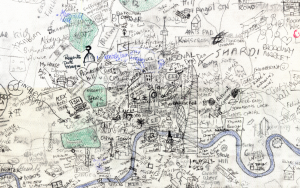Clouds across the moon
This movie shows a heatmap of London Bikeshare activity over the course of an average day – red indicates the density of arrivals, cyan the density of departures – and so white areas are where arrival and departures match. Animation … Continue reading →![]()

